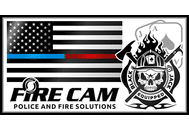Setting Up a Public Safety Drone Program
Drones are revolutionizing the way police, fire, hazmat and search and rescue conduct Public Safety missions and they are helping agencies save lives. Setting up an unmanned systems department within your agency requires aeronautical knowledge, administrative organization, flying skills and procedural operational SOP’s.
One of the first steps requires obtain federal regulatory approval to fly the drone or UAS in the national airspace (NAS). Two different options include operating under part 107 remote piloted aircraft (RPA) certification and or under a certificate of authorization (COA). This decision can be confusing but is ultimately determined by a number of factors including type and location of your operations. While both tools allow an agency to fly drone, each allows the operator to fly under a different set of rules depending on the requirements of that specific flight. We recommend seeking both certifications, and many agencies use both, whether operating under one set of rules or the other, depending on the mission.
Part 107 certification is very straightforward. It allows an operator to fly a small UAS under 55 pounds in daylight up to 400 feet in unrestricted airspace, within the visual line of sight (VLOS) of a drone, and not over people. Oversimplifying unrestricted airspace means flying outside of five nautical miles from a tower airport or requesting a waiver of airspace authorization to fly in other classes of restricted airspace.
Part 107 certification is obtained by taking a 60 question multiple-choice test, within two hours, requiring 70% passage or 42 correct answers. While it maybe the easier solution, 107 does not require flight training, so pilots need to train and develop client skills to a specific safety level. It cost about $150 to take the 107 test while it costs nothing to file a COA.
If pilots need to fly beyond certain 107 restrictions, they may apply for waivers to fight night, to fly over people or to fly BVLOS. The FAA administrator will determine whether there is a genuine need, and whether it is safe to execute those operations as part of the application.
The jurisdictional COA is better for agencies intending to operate in more complex airspace (Class B,C,D or E) or who may need to fly more complicated missions. The public safety agency requesting a jurisdictional COA by submitting an application outlining specific missions, operational areas, aircraft types, policies and procedures, drone pilot training program, maintenance, reporting and other SOP’s they will follow.
This process requires considerable knowledge to develop and submit a detailed plan for FAA approval, and the review may take three months or longer to complete. Once the FAA approves, the agency is then required to follow those rules approved in the COA.
Some waivers, such as flying at night, may achieve results similar to a specific COA, but other operations may not fall within the scope of standard 107 certification. A SWAT team, for example, may need to fly at night without lights in a covert overwatch or a barricaded subject operation. This operation may be approved under their COA if the agency can detail how it will mitigate the risk from having the lights off. In situations like this, the agency is still responsible for the safety of the operation and assumes liability in the event there is an accident.
A COA may not allow you to respond to a call from mutual aid if it is outside of your jurisdiction until the COA is amended, where as a 107 might allow you to respond to that request, depending on the class of airspace where that call for aid occurs. At the same time, COAs often trade access to restrict the airspace for other requirements not needed for a 107, such as an optional visual observer (VO). A COA also allows an agency to apply for an emergency COA (E-COA) that may allow the operator, on a case-by-case basis, to temporarily go beyond the established restrictions of their COA in an emergency situation. There is no E– COA process for 107 flight. With a 107, you can operate a drone from inside a moving vehicle if you need to cover during a mission but cannot with a COA.
The majority of our operations occur during the day, in unrestricted airspace, and these missions all fall under Part 107 without having a waiver for my operations such as marijuana grow search, security sweep for US Secret Service, SWAT barricaded subject, security sweep and observation for highway patrol, missing persons, robbery, fleeng suspects search, local agencies demo and training, and public awareness. A number of these missions with nighttime requirements are flown under the jurisdictional COA which allows night flight, and also the ability to drop payload such as a radio, life jacket, bottled water or extra magazines.
The most important aspects of the COA process may be your agency’s required planning and monthly FAA reporting. It takes extra time and effort but also ensures the safety and discipline in training, flight, maintenance and operations. This may serve as an additional sanity check that goes far beyond passing the written test required operate under 107, and these extra reporting requirements hopefully translate into more safe operations.
Applying for a COA vs. 107 doesn’t have to be an either / or decision. It may just be the one two punch required to fly all of your agencies you UAS missions.
